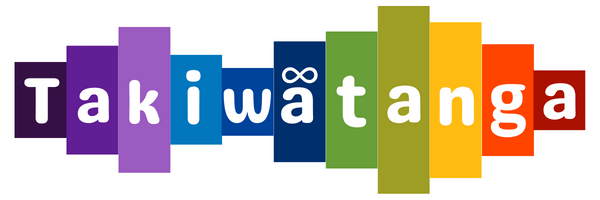Pre Intro message:
I watched the presentation A FUNctional approach to autism by Rebecca Connick, Occupational therapist.
Intro:
This is Lloyd I AM and you are listening to Takiwatanga, love not cure, exploring autism one strength at a time.
Body:
Different kinds of therapy can help autistic kids progress with learning.
One of them is Occupational Therapy.
Occupational therapy is a support provided to people who have limited ability to carry out daily activities due to an illness, injury, or health impediments.
For a child to succeed in learning, Rebecca said that the approach to learning for kids on the autism spectrum should be fun.
UNICEF published an article about the science of play. Learning through play is not just fun – it’s fundamental to your child’s development.
Another study at Harvard University suggests that children who learn through play pose a significant improvement in emotion regulation and attention. This could also help in the development of the executive function.
Before we deep dive into our topic. Let’s talk about the Executive function and why it is important to understand this.
When you think about executive function, think of this as the command center of your brain. This command center controls your focus, your ability to accomplish tasks and helps in regulating your emotions.
With learning through play. We can improve a child’s command center by making learning a fun activity.
During the presentation, I have noted down three key ideas.
Sensory need
Goal setting
Creativity at Play
- Sensory Needs
Sensory needs can be defined as the sensitivity of a person to one or more senses
There are 2 areas of senses – external and internal senses.
External senses process information through,
Visual – this is how a person sees things in an environment
Auditory – this is how a person hears the sound in an environment
Olfactory – this is how a person perceives smells
Gustatory – this is how a person perceives tastes
Tactile – this is the sense of touch
While internal senses process information through,
Vestibular – This is a person’s balance is maintained
Proprioception – is for body positioning and movement
Interoception – this is all about internal body sensations
These 8 senses are the fundamental building blocks of how a person perceives the world around him or her. These senses are also the foundation for supporting higher skills like learning, attention, even emotion regulation.
Before setting our goals.. We have to know what sensory needs to work on.
Rebecca said, you can not address any higher-level difficulties without addressing the foundational skills.
If a child is having learning difficulties, we can not address that if we don’t look at the factors leading to those challenges.
Such difficulties may be a noisy environment, or having a very bright room.
By simple observations, you can find out what sensory needs are requiring your attention.
In one of our examples, kids on the autism spectrum are usually sensitive to loud noise. If we do not address that, the child will focus more on the noise than the learning activity.
By knowing the child’s foundational sensory needs, we can help in alleviating the child’s learning challenges by putting up a better plan and addressing them.
One thing to keep in mind though is that every child is different and no child must be assessed the same. Therefore, seek expert’s advice.
- Goal Setting
By understanding the learning barrier of a child at a foundational level, you can set the right goal to address that.
Remember that even kids with special needs have goals and the main focus is for the child to attain independence. Our role as parents and carers is to support the child in meeting that need.
When setting up attainable goals, we can look at this in a multi-disciplinary approach. This is where sensory integration and occupational therapy comes into the picture.
But what is sensory integration?
Sensory integration is a process by which our brain receives signals from our senses so we can make sense of things around us. This will then enable our body to respond to those signals…
Whew! I know this is a lot to absorb…
So let me give you an example.
Let’s say you see a glass of pineapple juice on the table. Pineapple juice is not new to you and you’ve tasted one before.
So the moment you see that juice on your table, your brain re-process the information about your past experience with pineapple juice. And you know that if you drink that, you will experience a sour taste.
The moment you drink the juice, your taste buds send signals to the brain and when your brain processes that information, it will expect a sour taste.
What if it turned out that the juice tastes like water and no traces of sourness?!
If that happens, your brain will now tell you… this doesn’t make sense, the color of the juice is the same as before, but the taste is different. What happened there?
In turn, your brain is now confused and says, that doesn’t make sense, the color is the same as before but the taste is just like water? Interesting right? So that’s how sensory integration works.
To address the sensory needs of children, especially those who are on the autism spectrum, occupational therapy will observe a child’s sensory integration and see what actions can be done to improve that sensory need..
Once the need has been identified, the child will then be exposed to daily living activities that will support the child’s learning progression.
The focus of goal setting is targeted to the following foundational area.
Body movements, feeding and self-care, Cognitive and Visual skills
Body Movements involve observing the child’s play activities, looking at the hand and feet movement and the whole body movements.
Play is an important life skill for kids. Children will learn more through play than from telling them about the things they need to learn.
According to researchoutreach.org “Play is one of the biggest mysteries of learning”.
Feeding and Self Care
The child’s feeding behaviors will also be observed. If the child a picky eater, what contributes to that behavior, is it because of the color of the food? The texture? How about the taste?
Observing the child’s self care skills is also crucial in this stage. Can the child get dressed, wash their hands and feet, or go to the toilet.
Cognitive and visual skills are about observing the child’s ability to perceive their worlds and be able to execute their tasks.
Goal setting is prioritising the sensory needs of the child considering what is important for the child and the family.
- Creativity in Therapy
Children behave differently at home and at school. They also behave differently with their peers and with their families. To address the difference in these behaviors, functional activities will be introduced to the child. This will be the sensory integration therapy approach.
The therapy focuses on daily living tasks. By focusing on these tasks, children can still do the things they want to do and in the long run this will not give them an impression that they are doing work.
These daily living tasks could be eating, going to school, washing hands, playing, and a whole lot more.
The best place for kids to learn while having fun is using the child’s natural environment.
For best outcome, you can set up the child’s natural environment in a way where the child will want to seek out play. There is no replacement to see these kids learn in their natural environment.
For ideas, You can set up a tunnel using carton boxes for the child to explore. You can also put up a swing in your backyard for a child to climb. Can even do pretend plays using the child’s favorite toy.
Speaking of favorite toys.
What if the child has only one favorite toy and doesn’t seek out anything else?
If the child has no other interest aside from his or her favorite toy. You can use that toy to your advantage. You may get the child’s attention by doing so.
You can be creative and come up with different play ideas around this one toy.
By understanding the sensory needs of a child, you can set meaningful goals that are important for the child’s learning needs. In the end, you can improve the independence of children using the “Learning through Play” approach.
This is my take after watching the presentation, A FUNctional approach to autism by Rebecca Connick, an Occupational therapist.
End




0 Comments